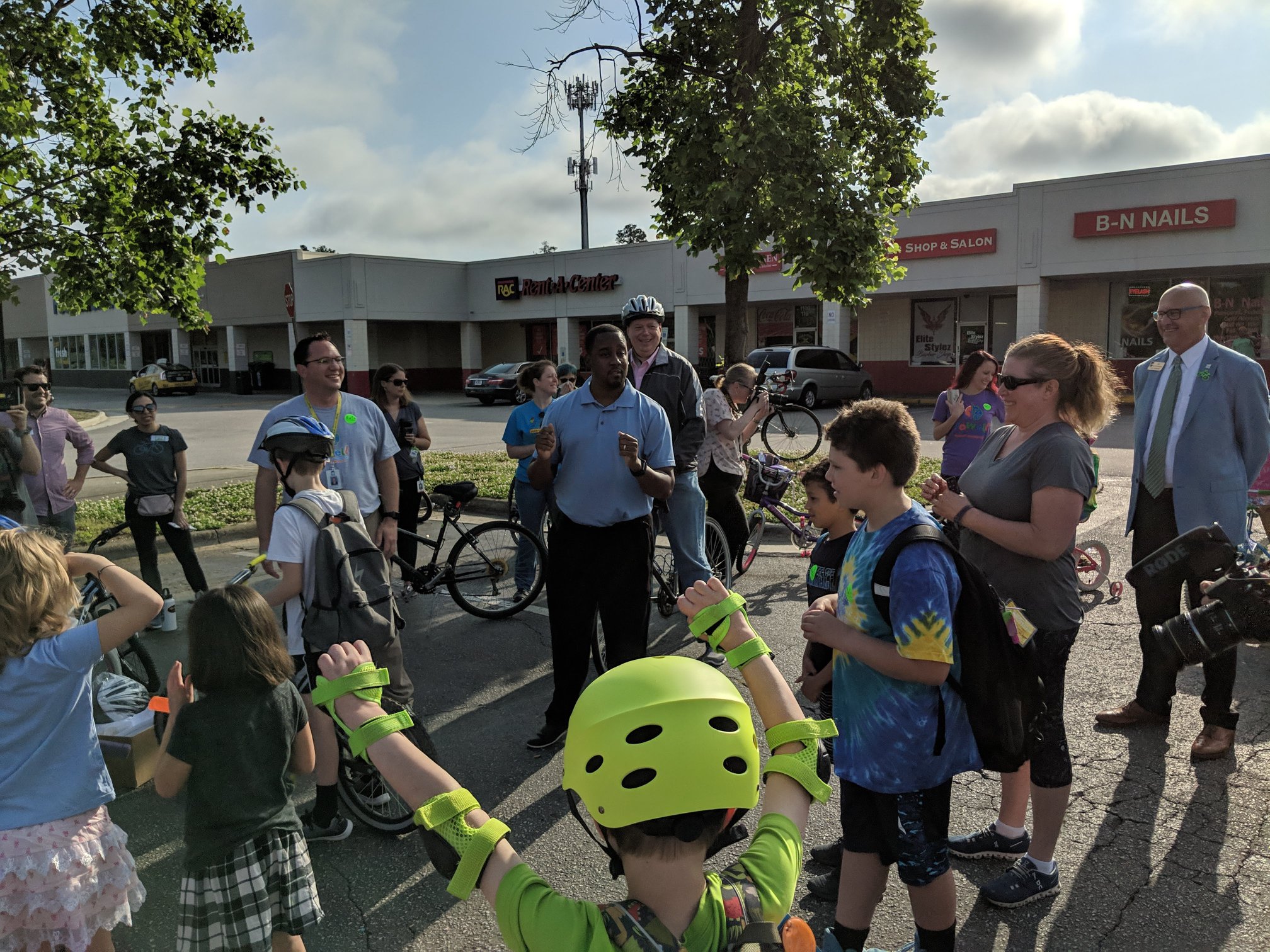WakeUP advocates for fast and reliable transportation, strategic land-use planning, affordable housing, and climate adaptation so that we can improve the health, safety, and quality of life for all residents.

What makes a community healthy? Is this something you think about as a resident? Our area is well-known for access to greenspace and other active-lifestyle benefits, thanks in large part to voters who approved projects like the Raleigh parks bond (check out this map for current park improvement projects) and other investments of Raleigh and Wake County in parks and greenways. This has contributed to a relatively high percentage of residents having access to recreation and exercise opportunities.
However, “healthy” can be a nebulous term as many factors go into the health and safety of individuals and communities, from healthcare access to air and water quality. In the US News and World Report’s 2022 Health Rankings, Wake County is ranked #148 out 500 based on 10 factors: population health, equity, education, economy, housing, food & nutrition, environment, public safety, community vitality, and infrastructure.
Many of these factors are core to WakeUPs advocacy efforts, especially environment, infrastructure, community vitality, and equity. We know that strategic planning moves us towards healthier outcomes, which is why we advocate for public transit access and Transit Overlay District (TOD) zoning.
Even the CDC has begun promoting activity-friendly communities through land use and transportation systems as an integral part of community health, since investments in transit and pedestrian and cyclist access are shown to increase activity in communities and decrease time spent in the car. Another study that examined neighborhood walkability, physical activity, and health outcomes on a national level similarly found that people who live in more walkable areas were more likely to be physically active and have a lower body mass index (BMI) compared to people in low-walkability neighborhoods. Walkability and public transit can also increase social health in addition to physical health by increasing opportunities for interactions between residents and neighbors, which can lead to more vibrant, connected communities.

As car fatalities continue to rise in this country and extreme heat and other climate-related impacts continue to affect our daily lives, health and safety are top of mind for WakeUP. Investments in public transportation like the coming Bus Rapid Transit (BRT) projects and other improvements in mobility that are linked to the BRT and the Transit Overlay District zoning that require better conditions for people, not cars, will increase the quality of life of residents through improving health and safety, stimulating the local economy, and reducing air and noise pollution, and helping people from all walks of life get to jobs, recreation opportunities, and services they need.
For more information on how mobility and transit investments can improve health and safety outcomes, check out these additional resources:
- Where the sidewalk ends: Residents express concerns about safety, mobility as Raleigh expands
- Raleigh plans safety overhaul on streets along New Bern Avenue
- Exploring the Cross-Sectional Association between Transit-Oriented Development Zoning and Active Travel and Transit Usage in the United States, 2010–2014 – PMC
- Walkable Cities Can Benefit the Environment, the Economy, and Your Health | The Climate Reality Project
- What is a road diet? The data behind how they work and how to implement them
- Taking steps to increase number of walkable cities in North Carolina
Similar Posts:
- None Found


